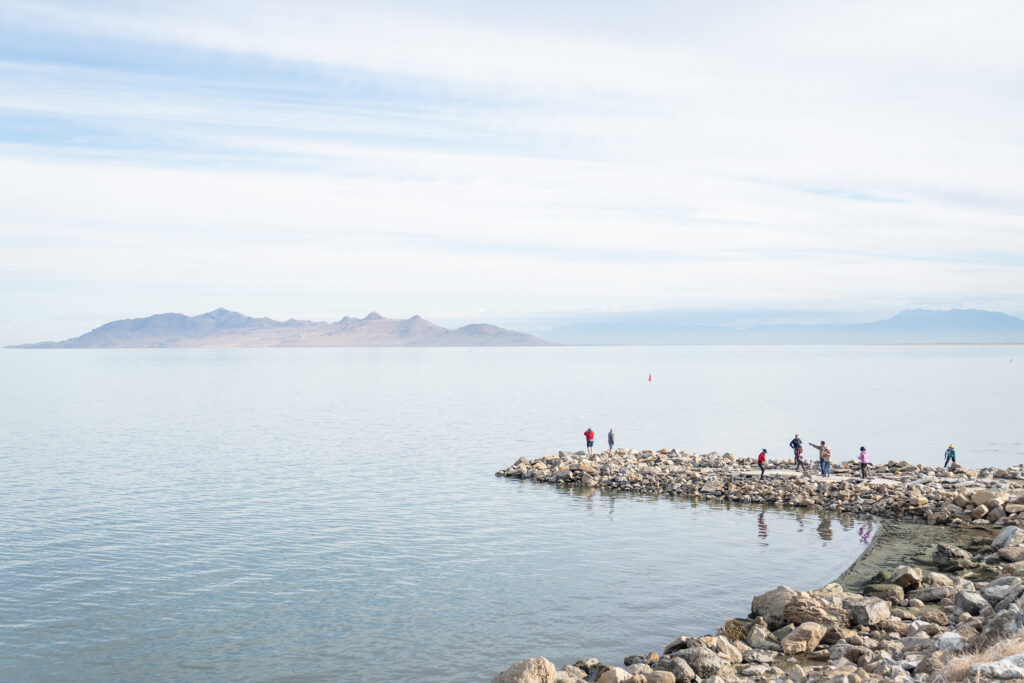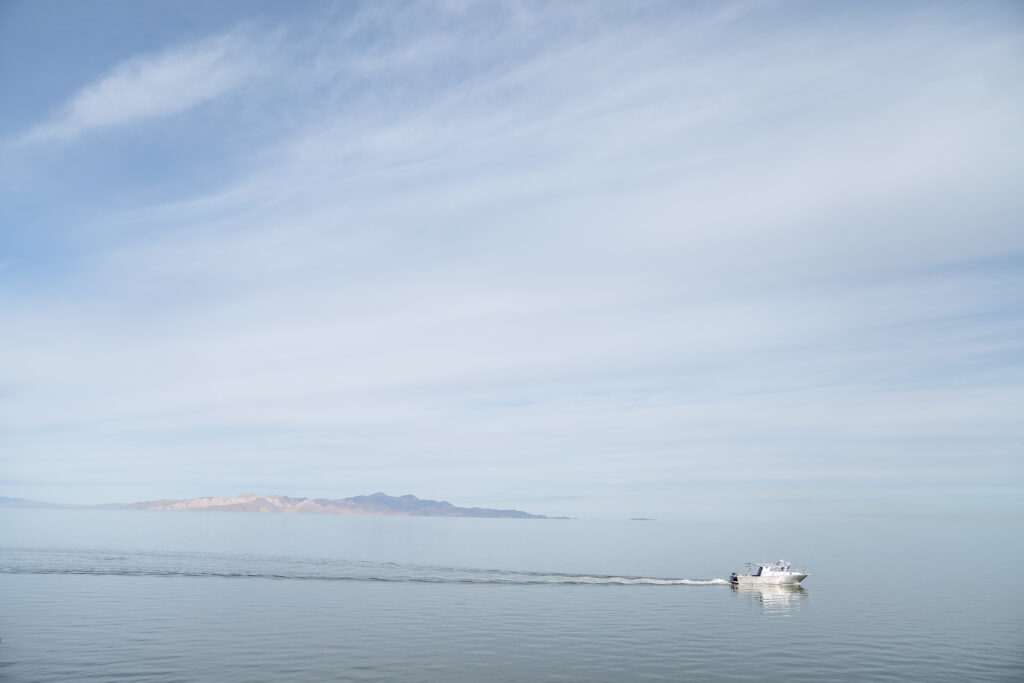By Xoel Cardenas, Sr. Communications Specialist, Office of the Vice President for Research
The Great Salt Lake Strike Team, co-founded by the University of Utah, reports that Utah is making steady meaningful progress in conserving the Great Salt Lake. Operating in a non-advocacy, policy-advisory role, the Strike Team provides impartial, data driven insights to support policymakers as they address the economic, health and ecological challenges posed by low lake levels.
According to the Strike Team’s 2025 data and insights summary, Utah’s multi-year, data-driven strategy to conserve, dedicate, and deliver water to the lake is on track. Key areas of progress include water conservation, infrastructure investment, statutory reforms and ecosystem management.
The report highlights findings on critical factors such as lake elevation, reservoir storage, salinity, streamflow, human water use, water rights, as well as change applications and mineral extraction. Over 30 major milestones from 2024 are identified, including:

Lake elevation: “Increased inflows during 2024 were spread across both arms of the lake, resulting in a stable elevation for the south arm and larger gains for the north arm (2.8-foot rise).”
Ecosystem recovery: “Brine shrimp populations increased, with egg numbers up 50% from last year.”
Invasive species: “The state removed 15,600 acres of water-intensive phragmites, plus many more by other entities.”
Funding: “Utah awarded $5.4 million to support 6,000 acres of Great Salt Lake wetlands and allocated $22 million for Great Salt Lake water infrastructure projects and $15 million to the Great Salt Lake Commissioner’s Office for planning and water leasing.”
Water donations and releases: “Jordan Valley Water Conservancy, Welby Jacob Water Users, and the Church of Jesus Christ of Latter-day Saints released approximately 10,000 acre-feet from Utah Lake to the Great Salt Lake via the Jordan River.”
Challenges and Long-Term Goals
While meaningful progress has been made, the Strike Team’s report emphasizes the costs of inaction to the Utah economy, human health, and ecological conditions remain significant. The work to conserve and deliver water to the Great Salt Lake is a “long-term endeavor.”
“Low lake elevations created by rising temperatures and human water depletions continue to put at risk the benefits created by the lake,” said William Anderegg, Strike Team co-chair and Director of the Wilkes Center for Climate Science and Policy at the University of Utah. “Our review of the data confirms that with steady and deliberate actions, we can first stabilize and then raise lake elevation to levels that protect the benefits provided by the lake.”
Stabilizing and raising lake levels, managing salinity, and protecting economic, human, and species health will require many years of stewardship, especially as Utah prepares for the 2034 Olympic and Paralympic Winter Games.
“Success requires everyone in the Great Salt Lake Basin to participate in yearly conserving, dedicating, and delivering water to the lake,” the report states.
“All indications demonstrate that delivering more water to the lake is a far more cost-effective solution than managing the impacts of a lake at a perpetually low level,” said Brian Steed, co-chair of the Great Salt Lake Strike Team and Great Salt Lake Commissioner. “We can invest time and financial resources now or pay much later. Fortunately, we have great data and a balanced and workable plan to succeed.”
Looking Ahead

In January, the Office of the Great Salt Lake Commissioner’s Office will release the “2034 Plan for a Healthy Great Salt Lake.” The plan builds upon the Great Salt Lake Strategic Plan, released in 2024, by identifying actions needed over the next ten years to preserve the benefits the Great Salt Lake provides to Utah and the world.
Get Involved
The Great Salt Lake’s future depends on collective action. To learn more and find ways to help, visit:
ABOUT THE GREAT SALT LAKE STRIKE TEAM
Utah’s two R1 research universities – the University of Utah and Utah State University – formed the Great Salt Lake Strike Team to provide a primary point of contact for policymakers as they address the economic, health, and ecological challenges created by the low elevation levels of the lake.
The Strike Team, along with State agency professionals, brings together experts in public policy, hydrology, water management, climatology, dust, and economics to provide impartial, data-informed, and solution-oriented support for the Commissioner’s Office and other Utah decision-makers. The Strike Team does not advocate but instead functions in a technical, policy-advisory role as a service to the state.
